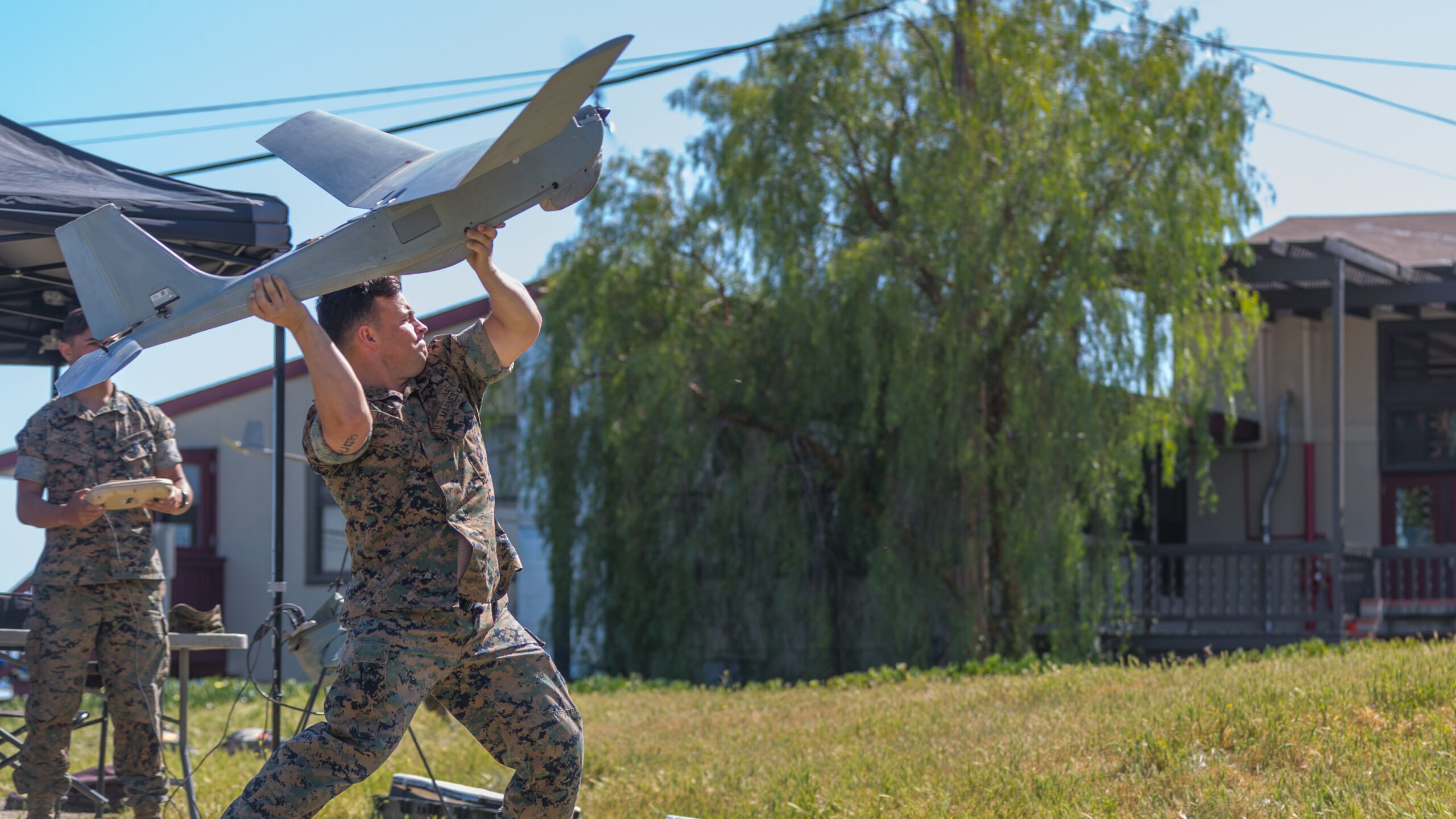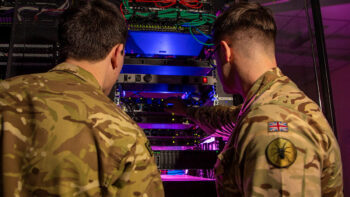
U.S. Marine Sgt. Timothy McGinness launches RQ-20 Puma at Camp Pendleton, Calif., April 11, 2018. (U.S. Marine Corps photo by Lance Cpl. Kerstin Roberts)
WASHINGTON: The director of the Pentagon’s tech hub said that not having a more effective, faster approach to adopting commercial technology is a “glaring weakness” in modernizing DoD, warning the US could fall behind China in technological innovation.
Mike Brown, director of the Defense Innovation Unit, told the Senate Armed Services Committee’s emerging threats and capabilities subcommittee Wednesday that Congress should provide funding to buy commercial products while at the same time eliminating the bureaucratic requirements process if the US wants to outpace its adversaries.
There needs to be more flexibility when it comes to moving money where it’s needed most, Brown said, adding he “realized why those things existed historically.”
“But now we’re in a serious tech competition with China and they’re not waiting for our democratic timeframes,” he said. “I like our system better than theirs, but we have to figure out how to move more quickly and it really, from a technology adoption point of view — whether it’s commercial technology or inventing the next technology — it’s about having the flexibility to move it where it’s needed most in a simpler fashion than we have today. I think that’s the most critical element we need to attack between Congress and the department to improve our defense.”
DIU in fiscal 2021 transitioned eight new technologies to the military services and awarded 72 prototype other transaction contracts, according to its 2021 annual report. The tech hub awarded several contracts for cyber-focused projects, including a cyberspace deception prototype platform that will warn against adversarial activity and a commercial threat data prototype for US Cyber Command.
RELATED: Hypersonics And Cyber Tools: Pentagon’s Innovation Hub Highlights FY21 Tech Transitions
In total, DIU has introduced 100 new vendors to DoD, but its successes reflect less than 1% of the defense procurement budget, and part of that is because commercial technologies are different from defense technologies, Brown told lawmakers.
“First, they’re supplied in massive unit volumes, sometimes in the millions often led by consumers,” he said. “Second, commercial technologies evolve at faster speeds than defense technologies, refreshed in 12 to 18 month cycles. Third, commercial technologies are not service specific, so we often don’t know where to buy them. Lastly, we do not control the spread of commercial technologies. Dangerously, they are available to our adversaries as soon as they’re available to us. No wonder, then, we need a different way to assess and buy these commercial technologies.”
In a Feb. 1 memo obtained by Breaking Defense, Undersecretary of Research and Engineering Heidi Shyu divided 14 technologies DoD considered critical into three broad categories, including “effective adoption areas,” or technologies that are already available in the commercial sector. Examples in that category include artificial intelligence, advanced computing, microelectronics and software interfaces.
Brown told lawmakers that of those 14 critical technologies, 11 of them are from the commercial sector.
RELATED: Pentagon’s Largest Ever RDT&E Budget Request Reflects AI Prioritization
‘Capabilities Of Record’
DoD should become a “fast follower” to gain rapid access to technologies and maintain technological parity with adversaries, Brown told lawmakers. That would require rethinking the three elements of how capabilities are brought to DoD: requirements, acquisition and budgeting.
Brown said DoD should more broadly adopt Other Transaction Authorities and establish dedicated organizations, or “homes,” for commercial technologies that can focus its expertise and which are not service-specific.
“Paired with a stable budget, this becomes a capability of record, not a program of record, where the need for the capability is ongoing,” he said. “DoD can then assess vendors on a more continuous basis and refresh with a frequency that matches commercial cycles. In doing so, DoD can furnish these capabilities to warfighters in a year rather than a decade.”
In terms of budget reform, Brown said Congress should allow for more flexibility in the appropriations process beyond programs to budget for capabilities, including small drones and satellite imagery, “which we know we’ll need for decades to come.”
The requirements process for commercial technologies should also be eliminated and replaced with “a rapid validation of needs.” Brown argued detailed requirements limit the creative problem solving of companies and limits the number of competitors. The US should also source commercial technology from allies and sell proven solutions to allied militaries, he added.
“Maintaining our military’s technological superiority requires us not only to develop defense technologies like hypersonics, but of equal importance fast follow the innovations of our vibrant commercial technology sector,” Brown said. “There’s a reason the US innovation ecosystem is the envy of the world and we need to make this the envy of the military.”
OSINT overdose: Intelligence agencies seek new ways to manage surge of open-source intel
AI is driving a tsunami of private-sector open-source intelligence. Now the federal Intelligence Community just has to figure out how to ride the wave.



























